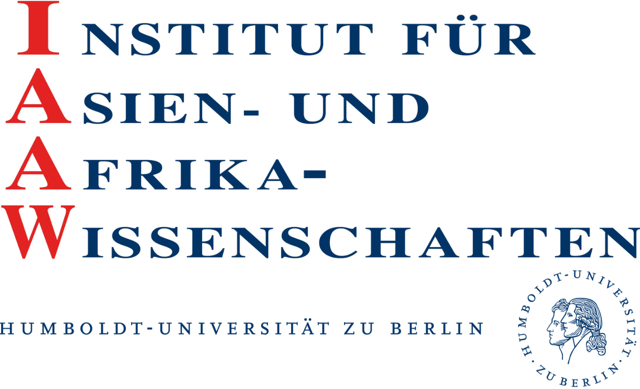
Within the Shaping Asia initiative, tracing ‘connectivities’ and engaging in ‘comparisons’ and ‘collaborations’ will be the main modalities for engaging in collaborative academic research on Asia. Taken collectively, these three strategies will open new avenues in conducting research and enhance academic self-reflexivity. While conceiving of ‘connectivities’ and ‘comparisons’ as methodological tools, these will also be taken as objects of inquiry.
Connectivities are dynamic relations and processes connecting different societal entities – such as social institutions, objects, forms of knowledge - and processes. Scholarship in Humanities has used the term ‘connectivity’ to denote a focus on inter- and multicultural formations and their interrelations. Earlier examples include new media technologies and global, historical case-studies of regional reciprocity.
The concept of ‘connectivities’ prompts us to focus on entanglements, transactions, transgressions and mediators that are operative between locales and regions, giving them shape. ‘Shaping Asia’ will focus not merely on the fact that two sites are connected, but also on how the connections transform what is being connected. Equally, we need to inquire into ruptures, antagonisms and closures leading to disconnectivities. This way, we underline the promising need to think beyond and across the borders of disciplinary and conceptual entities (e.g., historical, political, linguistic). While connectivities are a relevant heuristic lens for research, they are essential to thinking and further impacting the fabric of our conceptualising Asia.
‘Shaping Asia’ will inquire how difference and sameness are put into relation at different scales and possibly between them. It will instigate conceptualisation towards grasping social realities created through mutual observations, entanglements, and (tacit or overt) comparisons as well as towards understanding their effects (Epple und Erhart 2015, van der Veer 2016). Participants will discuss how comparisons instigate change at three levels, i.e. how comparisons shape societal processes, how scholarly investigations observing those are driven by comparisons, and – last but not least - how they would profit from engaging in trans-regional comparisons.
Comparisons can be tacit or overt. A broad range of quantifications at global and regional scales is driven by pronounced comparative orientations. Tacit comparisons are omnipresent – in societal practices and in scholarly inquiries; these often go beyond ‘fixed’ units or binary oppositions. They are located in the fields of artistic production, in assessments of modes and benefits of religious practices, as well as in the human conceptualisation of wellbeing. Inquiring self-critically into such practices will help us uncover relationalities and entanglements that matter for a study of how Asia is shaped.
Encountering different solutions to similar problems such as health, social welfare, and climate change that are oriented by different cultural orientations or different political cultures can result in creative readjustments. This may be the case in transnational spreading of ideas and modes of action in transnational critical movements, in the mutual observations in media production, or through the ways in which conflicting actors (‘Konfliktakteure’) will seek and claim legitimacy while proposing visions of social orders that challenge the status quo.
Lastly, research traditions and modalities of knowledge generation, governance, and public space deserve comparative analysis. This goes beyond the dichotomization of Western approaches in comparison to non-Western ones, but refers to intra-Asian traditions, features, patterns and characteristics. What can we learn from comparatively reflecting on those aforementioned modalities? What kind of trajectories can be traced that also help to explain why often compartmentalized variants of Asia studies in Germany (Chinese Studies, Japanese Studies, Southeast Asian Studies etc.) differ in their approaches and self-understandings and often undermine trans-regional conversations and approaches? This would particularly matter for diachronic and synchronic advances across disciplines.
Over the last years, the humanities and social sciences (especially those in qualitative study fields, and the so-called ‘small disciplines’, (Kleine Fächer)) have witnessed a change regarding the nature and scope of collaboration. While important contributions continue to come from individual disciplinary projects resulting in single authored publications, more scholars currently combine and pursue their own projects by engaging in collaborative exchange.
The workshop will draw on the readiness to engage in exchange, in the quest to initiate a platform bridging area and disciplinary (systematic) perspectives. It will enable exchanges of data, conceptualization and methodologies. At the same time, exchange should provide support for the ‘germination’ of future research projects carried out by individual scholars and in collaboration. Collaborative exchange will be crucial in the field of connectivities as well as in that of comparisons. The former requires joining forces through multi-sited and multi-perspectival observations. Yet, connectivity and collaboration as promising approaches will not suffice. It will also be necessary to establish when and in what way exchanges are ‘multi-perspectival’ in nature and how they come about in our research inquiries and methods.
Are exchanges between the global ‘North’ and ‘South’ necessarily multi-perspectival? To what extent are scholars across the world able to share academic traditions when globalizing forces buttress a canonization (if not homogenization) in academic standards of excellence and travel of ideas? What role do geo-political positionings play in academia? Last but not least: How do research policies affect scholarly positionings?








